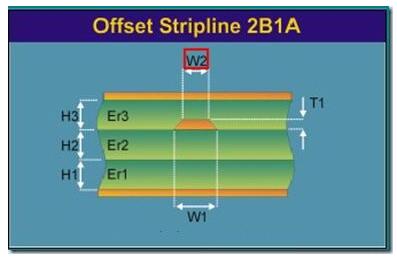1. Impedance characteristics of printed circuit board:
According to the signal transmission theory, the signal is a function of time and distance variables, so every part of the signal on the connection may change. Therefore, determine the AC impedance of the connection, that is, the ratio of the voltage change to the current change as the characteristic impedance of the transmission line (Characteristic Impedance): The characteristic impedance of the transmission line is only related to the characteristics of the signal connection itself. In the actual circuit, the resistance value of the wire itself is smaller than the distributed impedance of the system. In high-frequency circuits, the characteristic impedance mainly depends on the distributed impedance brought by the unit distributed capacitance and unit distributed inductance of the connection. The characteristic impedance of an ideal transmission line only depends on the unit distributed capacitance and unit distributed inductance of the connection.

2. Calculation of the characteristic impedance of the printed circuit board:
The proportional relationship between the rising edge time of the signal and the time required for the signal to be transmitted to the receiving end determines whether the signal connection is regarded as a transmission line. The specific proportional relationship can be explained by the following formula: If the length of the wire connection on the PCB board is greater than l/b, the connecting wire between the signals can be regarded as a transmission line. From the signal equivalent impedance calculation formula, the impedance of the transmission line can be expressed by the following formula: In the case of high frequency (tens of megahertz to hundreds of megahertz), it satisfies wL>>R (of course, in the range of signal frequency greater than 109Hz, then Considering the skin effect of the signal, this relationship needs to be carefully studied). Then for a certain transmission line, its characteristic impedance is a constant. The phenomenon of signal reflection is caused by the inconsistency of the characteristic impedance of the driving end of the signal and the transmission line and the impedance of the receiving end. For CMOS circuits, the output impedance of the signal driving end is relatively small, tens of ohms. The input impedance of the receiving end is relatively large.
3. The characteristic impedance control of the printed circuit board:
The characteristic impedance of the wires on the printed circuit board is an important indicator of circuit design. Especially in the PCB design of high-frequency circuits, it is necessary to consider whether the characteristic impedance of the wire is consistent with the characteristic impedance required by the device or signal, and whether it matches. Therefore, there are two concepts that must be paid attention to in the reliability design of PCB design.
4. Impedance control of printed circuit board:
There are various signal transmissions in the conductors in the circuit board. When it is necessary to increase its frequency in order to increase its transmission rate, if the circuit itself is different due to factors such as etching, stack thickness, wire width, etc., the impedance value will change, making it The signal is distorted. Therefore, the impedance value of the conductor on the high-speed circuit board should be controlled within a certain range, which is called "impedance control". The main factors affecting the impedance of PCB traces are the width of the copper wire, the thickness of the copper wire, the dielectric constant of the medium, the thickness of the medium, the thickness of the pad, the path of the ground wire, and the wiring around the wire. Therefore, when designing the PCB, the impedance of the traces on the board must be controlled to avoid signal reflection and other electromagnetic interference and signal integrity problems as much as possible, and to ensure the stability of the actual use of the PCB. The calculation method of the impedance of the microstrip line and strip line on the PCB can refer to the corresponding empirical formula.
5. Impedance matching of printed circuit board:
In the circuit board, if there is signal transmission, it is hoped that from the sending end of the power source, it can be smoothly transmitted to the receiving end under the condition of minimum energy loss, and the receiving end will completely absorb it without any reflection. To achieve this kind of transmission, the impedance in the line must be equal to the internal impedance of the transmitter to be called "impedance matching". When designing high-speed PCB circuits, impedance matching is one of the design elements. The impedance value has an absolute relationship with the wiring method.
For example, whether to walk on the surface layer (Microstrip) or the inner layer (Stripline/Double Stripline), the distance from the reference power layer or ground layer, trace width, PCB material, etc. will affect the characteristic impedance value of the trace. In other words, the impedance value can only be determined after wiring, and the characteristic impedances produced by different PCB manufacturers are also slightly different. Generally, simulation software cannot take into account some wiring conditions with discontinuous impedance due to the limitation of the circuit model or the mathematical algorithm used. At this time, only some terminations (Temninators), such as series resistance, can be reserved on the schematic diagram. Alleviate the effect of discontinuity in trace impedance. The real solution to the problem is to try to avoid impedance discontinuities when wiring.